Control System Design for Robots: Single Link Manipulator - ELEC-848
VerifiedAdded on 2022/09/13
|5
|685
|17
Project
AI Summary
This assignment focuses on the design and simulation of control systems for a single link manipulator, as outlined in the ELEC-848 course. The project involves implementing and comparing the performance of various control strategies, including inverse dynamics, robust inverse dynamics (with hard and soft switches), sliding mode control (with hard and soft switches), and the Slotine and Li adaptive controller. The simulation is conducted using Simulink, with the actual manipulator dynamics modeled using specific parameter values and estimated values for controller design. The desired position input is defined, and the performance of each controller is evaluated through plots of position, position error, control command, and a 3D Lyapunov function. The analysis includes a discussion of the stability and performance characteristics of each controller, with references to relevant research papers. The objective is to provide a comprehensive understanding of control system design for robotic manipulators, emphasizing practical implementation and performance evaluation.
1 out of 5
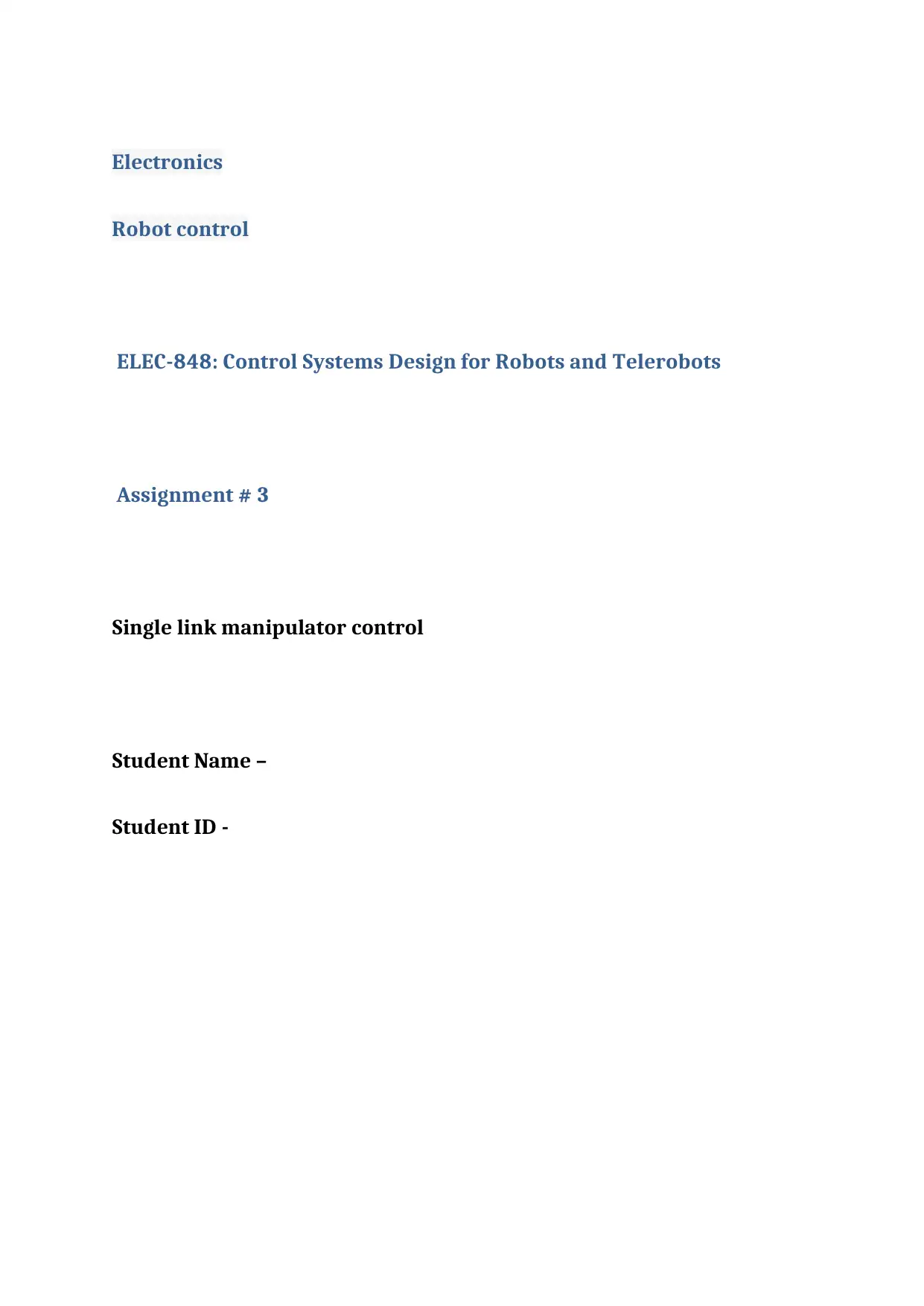
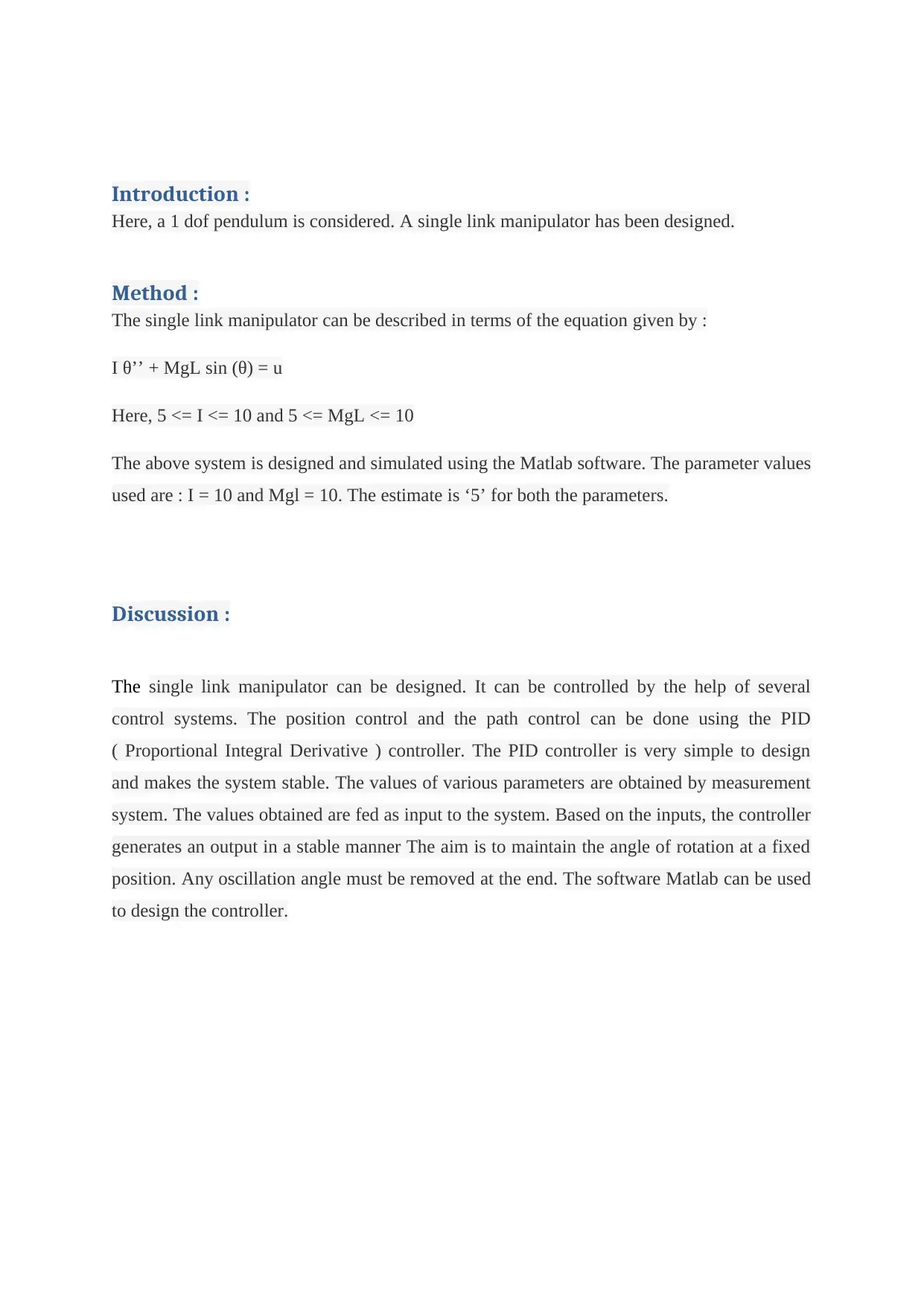
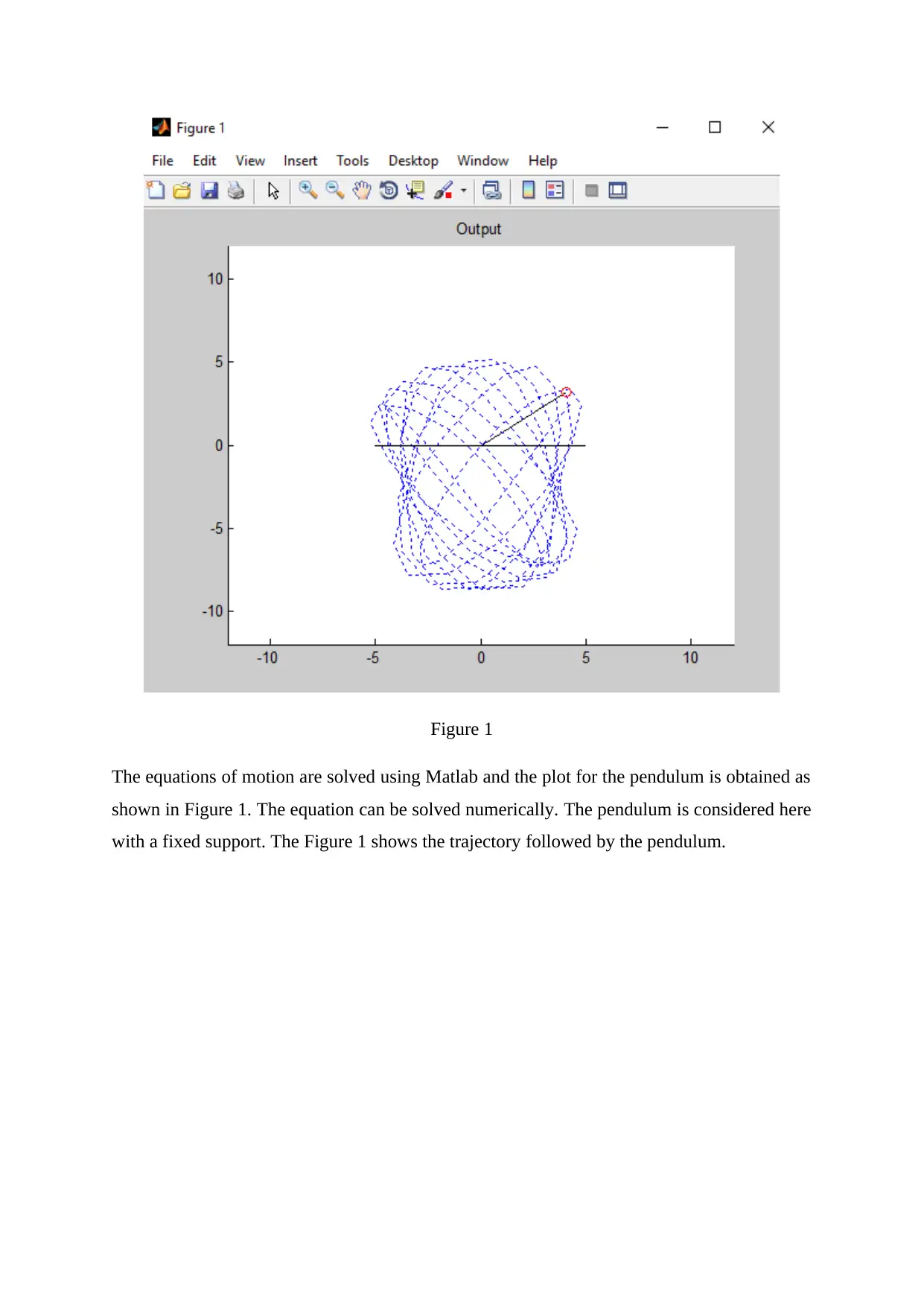

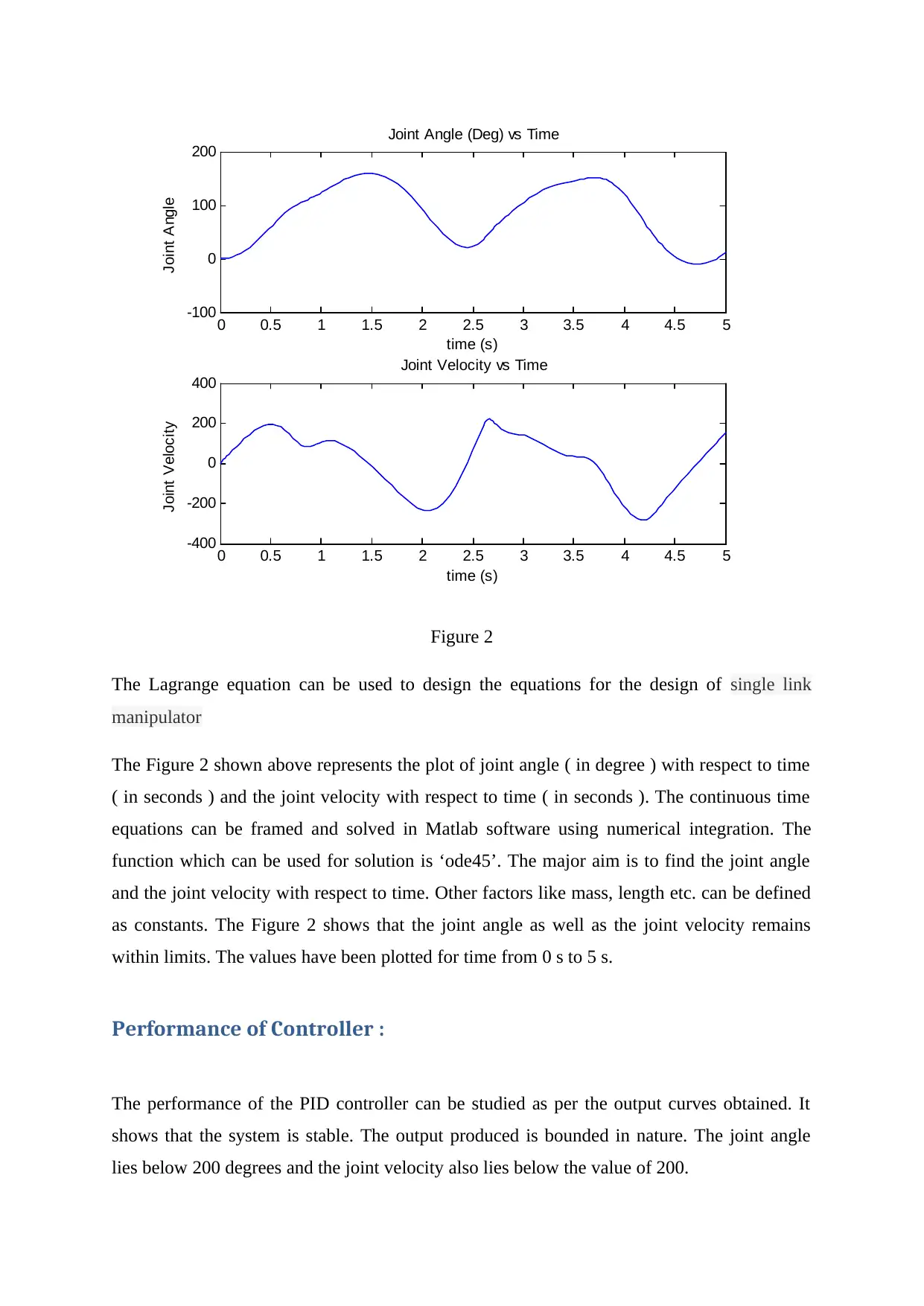
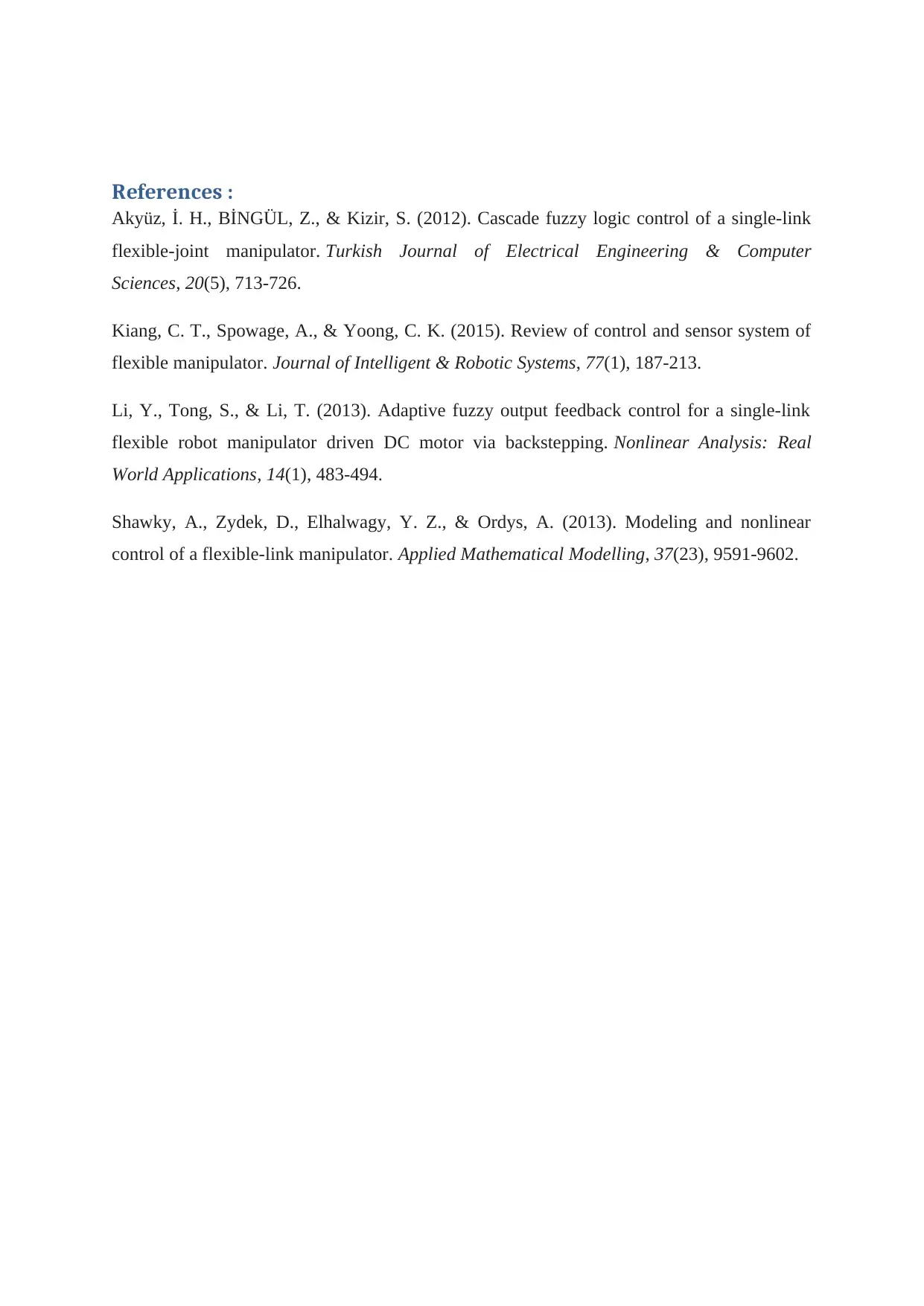






![[object Object]](/_next/static/media/star-bottom.7253800d.svg)